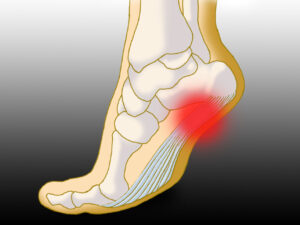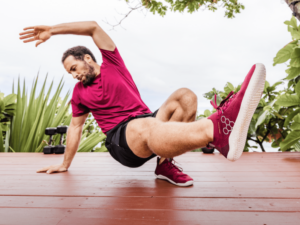One of the things we get asked about the most when we’re spotted wearing, training or running in barefoot shoes is if we have any advice around the transition period from normal shoes to barefoot ones.
Whilst I’d love to be able to say that no transition period is necessary – to minimise the risk of injury or discomfort, taking the following tips into consideration is probably a good idea:
- Understand the Benefits: Educate yourself on the benefits of barefoot or minimalist shoe running. These shoes can help improve your running form, strengthen your feet and lower legs, and potentially reduce the risk of certain injuries. By understanding these benefits you’ll also get an idea of how barefoot shoes work and affect your muscles – this in itself will prepare you for where you might feel some natural discomfort or pain. For me, it was all in my calves….but even though I say so myself – I have calves to die for now!!
- Start Gradually: Begin by incorporating minimalist shoes into your training gradually. Start with short distances and low-intensity runs. This allows your feet and muscles to adapt to the new footwear. Also, and what I found hugely beneficial, is start wearing your new barefoot shoes for even short walks to the local store or coffee shop. Those short trips in them really got me used to the feeling of being “barefoot” and got my muscle groups and feet reacting to it much more quicker.
- Mix and Match: Initially, use minimalist shoes for a portion of your runs while still using your regular running shoes for the rest. This hybrid approach can help your body adjust without placing too much stress on it. I started with my short runs barefoot, my Zone 3 runs and long runs in the old trainers. Then I did short and Zone 2 runs in barefoot sneakers, and just long runs in my normal shoes – then zone 2 and long runs in barefoot trainers and short runs in normal trainers – and now all runs in barefoot!!! That gradual shift and change really worked for me.
- Focus on Form: Pay attention to your running form when wearing minimalist shoes. These shoes encourage a more natural stride, with a midfoot or forefoot strike. Avoid overstriding and let your feet land beneath your body. To be honest I am still constantly checking myself when running too make sure I keep this form – when its right, it feels right – but it does take some practise.
- Strengthen Your Feet and Ankles: Since minimalist shoes provide less cushioning and support, it’s essential to strengthen your feet and ankles. Include exercises like toe taps, calf raises, and toe curls in your routine. Also, especially in the early days, do these exercises after each run and before each run. It seems excessive, but also acts as a way of stretching.
- Increase Gradually: Slowly increase the distance and intensity of your runs in minimalist shoes. Listen to your body and be prepared to scale back if you experience any discomfort or pain.
- Pay Attention to Recovery: Adequate recovery is crucial during the transition. Give your feet and lower legs time to adapt by incorporating rest days and activities like stretching or yoga into your routine.
- Be Patient: Transitioning takes time, and your body needs to adjust. Be patient and don’t rush the process to avoid injuries.
- Consider Terrain: Start on softer surfaces like grass or trails when transitioning to barefoot trainers. This can reduce the impact on your feet and allow for a more gradual adjustment.
- Listen to Your Body: If you experience persistent pain or discomfort, consider seeking advice from a healthcare professional or a running specialist. It’s crucial to address any issues early on to prevent more severe injuries.
Remember that everyone’s transition is unique, and what works for one person may not work for another. Pay attention to your body, and make adjustments based on how you feel during and after your runs.
Hope this advice helps – enjoy that transition.









